-
Posts
68 -
Joined
-
Last visited
Content Type
Profiles
Forums
Articles
Gallery
Downloads
Events
Posts posted by Corin
-
-
do you print a reverse image so it appears normal once you wash off the paper?
Of course.
You need to do it as a negative in mirror reverse, and print it at the highest possible resolution or else it will look grainy. I good photo editing program can normally handle it without losing any quality, other programs like publisher and so on will loose too much quality when you flip the image... it is very frustrating getting the image quality right. -
Thanks for posting that!
Thanks for saying thanks, it makes going to the trouble worthwhile. -
I missed it, but what is the nail polish for and where is it used?
The toner used as a resist is not perfect, and if there are large areas that have no breaks in the toner where you want the etch to occur, the current finds its way through the toner and etches where you don't want it to creating a "shadow" by nail polishing any large areas the path of least resistance is to the unprotected areas you actually want the etch to occur, so very little if any marks where you don't want them. you will see what I mean if you don't do it.
That and pink is nice on a knife.... -
Send me a PM and I will send you some Beefwood, Grevillea Striata. Heaps better. IMHO
-
Made this tutorial for anyone interested in etching anything onto a blade whenever you want without fancy stencils and machines and stuff.
Video removed due to inappropriate language for a family forum.
Corin, please resubmit a clean version of the video as it contains some good information on etching.
If you would like to submit still images and text, that will work also.
Edited version for a family forum.
The short version
Print your image on a thin piece of paper with a laser printer.
Tape it to the object being etched.
Transfer the image to the object with a not iron.
Isolate the image from the rest of the object with electrical tape.
Connect the POSITIVE 9 volt electric to the object.
Connect the NEGATIVE 8 volt electric to a q-tip.
Dip the q-tip into a salt water solution and let the electric pass across the liquid, No not touch the surface of the object. The longer you etch the deeper the etch becomes.
Wipe off the salt water, remove the tape, and clean the image with acetone. -
I personally found it pretty amusing when he came home and showed mum all the things he had made.
1 x hand forged knife,
1 x hand forged throwing knife
1 x mostly finished short sword
she was less than impressed, but I was pretty impressed with his first attempt at a knife. The throwing knife was pretty cool too just quietly, but that has already been "lost". Heck it beats sitting at home playing with his ipod. -
Hmmmm That's lunch time in Australia, I may be able to make it...
-
Here is a video with some pictures of the event....
-
Forge.... Packed
Anvil.... Packed
Tools.... Packed
Steel.... Packed....
Forge building stuff.... Packed
Camping gear... Packed
I have a full 8 x 5 box trailer and Ute (pickup for the yanks) and I know I am forgetting something..... Oh yeah! Beer! :D
See you all on the weekenbd -
Hi Folks,
I will order the refractory tomorrow. So far I have 5 people confirmed...
The three who saw me at menangle and Drewy and Ron....
anyone else please let me know asap. -
I'm interested in watching the process Corin, but wont have the money for all the bits as I will probably want to make a two or three burner as we have talked about. But if you can bring a forklift tank, if available, I can get started on legs, a stand, cutting it open etc when I get home. I'm actually going to be in Picton on Saturday if that's easier, depending of course if one can be sourced that quick.
Cheers
Ian
Hi Mate,
I will find a suitable bottle for you and bring it down to moonies. I won't be available on the weekend, but if you want to come down someone should be home, or I can leave it out the front, if you want to go that way.
Just let me know. -
OK Guys Just been getting some pricing together...
Basically, if you want me organize the refractory for you, (on the weekend someone volunteered to pick it up for me, I need that person to contact me, it will save building in a freight charge) for a single 9kg cylinder forge with simple fiber board door it will cost $55 for the best, 160 density wool, 1600 Deg C fine grained castable floor, ridgidizer to coat the wool, and material for the door (s) This is my cost (actually a little less because some of it I already have left over from other jobs)
I am doing a special Burner kit for the build trying to keep costs down as low as I possibly can. This price is only available for those attending Moonies this year.
Basically for a simple system, that is, High pressure regulator, cylinder connection, high pressure, low temp hose, burner, burner tube and nozzle. Quarter turn ball valve, to allow easy and quick shut off. copper tube to keep hose away from the heat $150
Total $210
Retail value about $300 +
There are several optional extras I would recommend you consider though, some will offer much better safety.
Pressure Gauge, allows you to get repeat-ability quickly and easily.
High Temperature Hose, better protection against damage.
Pilot system to allow you to drop back to a pilot flame easily.
Obviously these all add to the expense, but I would consider them all standard fare for my own forge contact me if you want a price and let me know if you want any of these add ons.
I am not going for the cheapest forge with the system I have chosen. You can save money in lots of areas if you want, but I have selected the best quality base materials to build a forge that should give you years of reliable service.... It is EXCELLENT value for money, but no, not cheap. -
I have 3 people confirmed to do a forge build along on Saturday morning. I will only have enough gear for those that confirm before this friday. Time is running out!
Around $200, you go home with a forge. -
I am looking after the kids all weekend.... so looks like we are all going out for a day at Menangle.
Could not be better. See you Saturday. -
This has been moved, which is fine, but this process works equally well for any item you want to heat treat and particularly well for items that have been finished to a high tolerance. I use this process for making precision punch sets where I cannot afford to loose anything to scale...
Mod Note: Your Video was about knives so most sensable people would look for that here. rather than in general or gas forges. -
As said above lots of things cause a warp, but there are some good ways to correct them without stress or much risk...
Most warps can be corrected by getting a small G clamp and a piece of slightly curved leaf spring.
Heat the knife and spring in the oven to tempering temperature, and place the knife against the concave side of the piece of spring. apply a small (1") G clamp to the blade and spring at the place where it warped and tighten till the blade is straight (where gloves as everything will be hot obviously) temper for 1-2 hours, cool, check and if not straight, do it again this time going a little past the straight point when you clamp, and see if that works.
Every blade i have corrected with this method has come out perfect.
If this is not clear enough and you need a picture just let me know. -
Hi Guys,
about time I made another contribution on here so here goes.
This method works extremely well for me both for knives and anything that needs heat treating where scale and decarburization will cause problems. The purpose of this thread is not to discuss the properties of various types of steel, but simply how a gas forge can be best utilized.
OK first up, the Setup I use... Here is a simple sketch...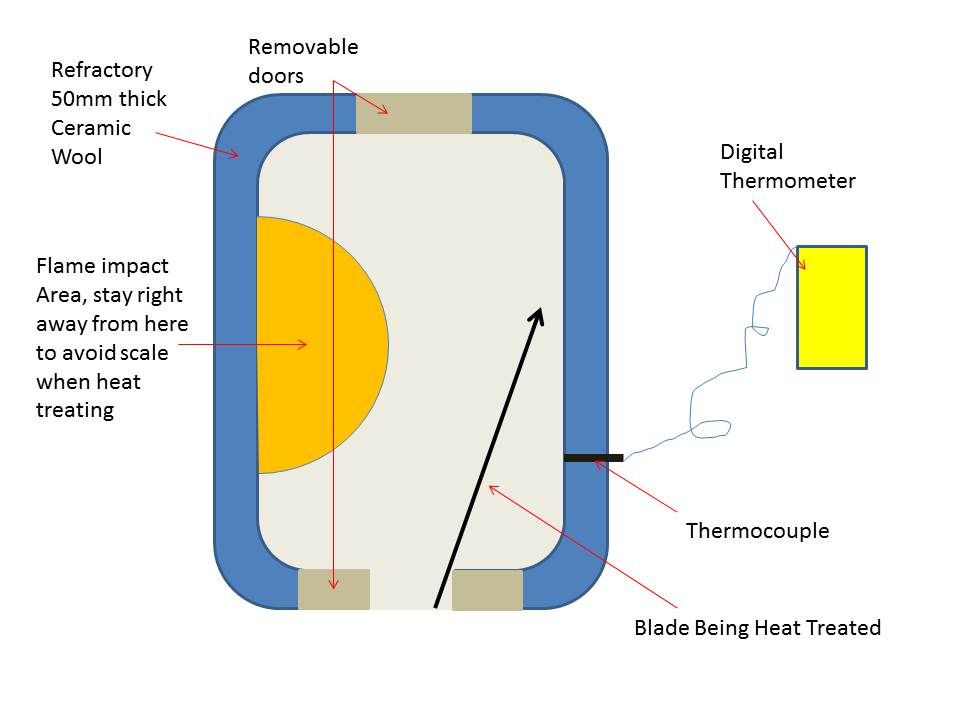
This sums it up pretty simply.
Here is how the thermocouple is mounted...
Drill a hole in the side of the forge, make a hole in the refractory, I think I just poked a nail through but whatever works for you..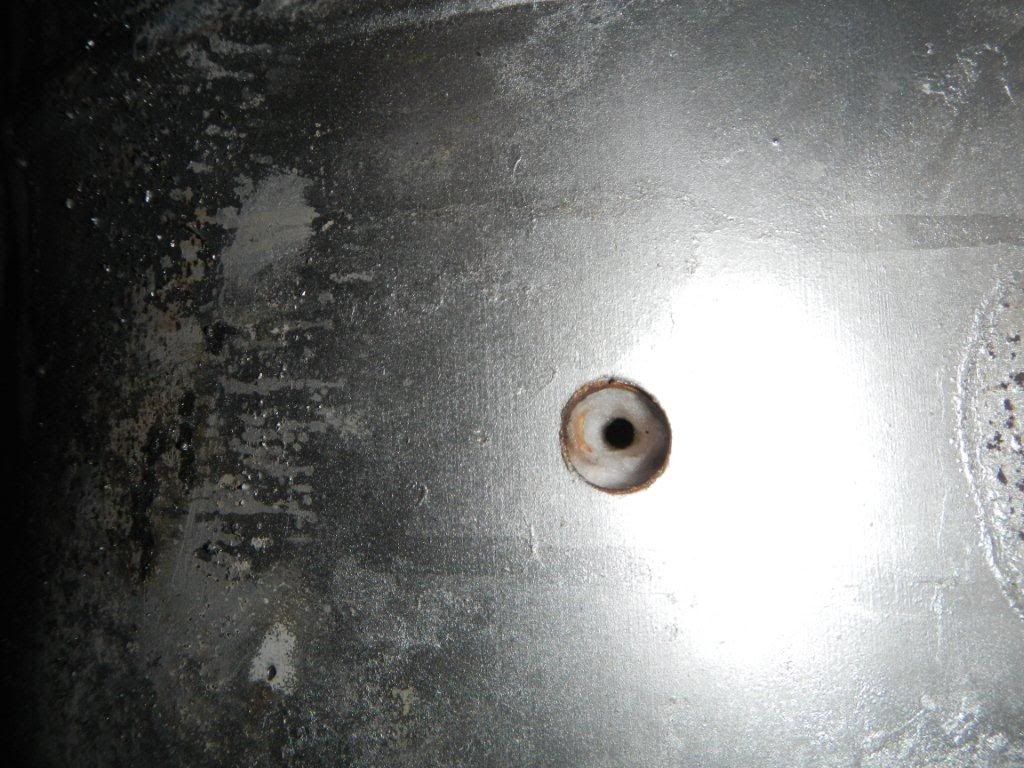
Next take your thermocouple and stick it into the hole (very difficult this forge business)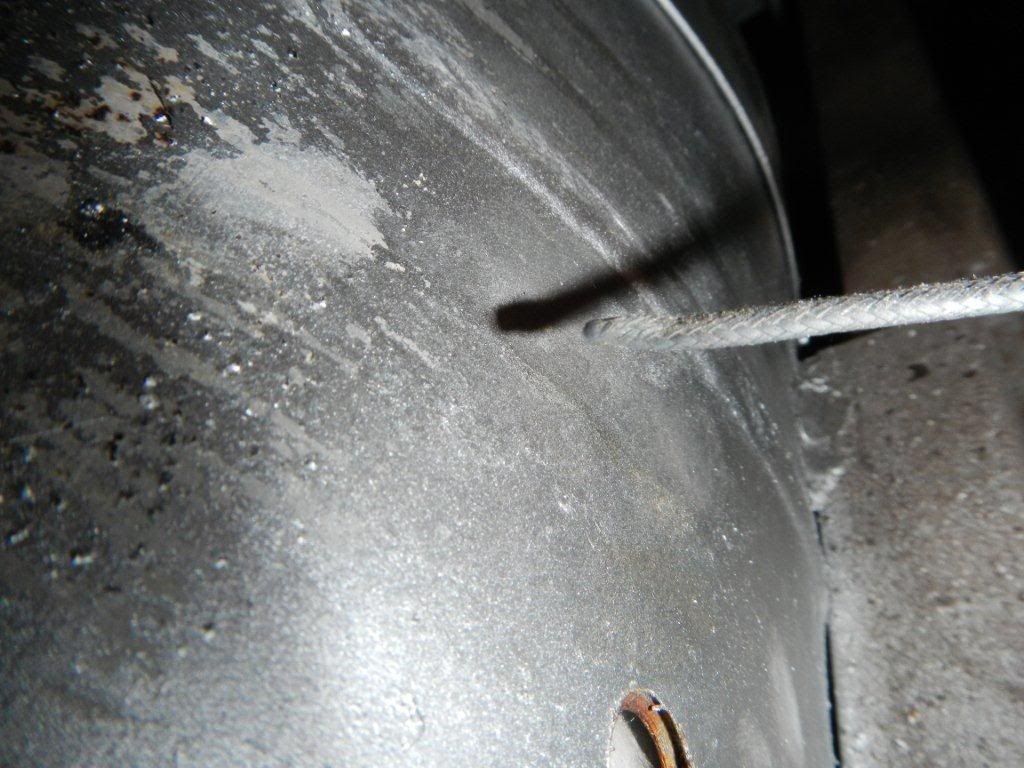
The tip of the thermocouple is very delicate once it has been heated a few times it will be very brittle and easy to damage. So don't. The tip is the only bit that needs to get hot. so don't poke it in too far.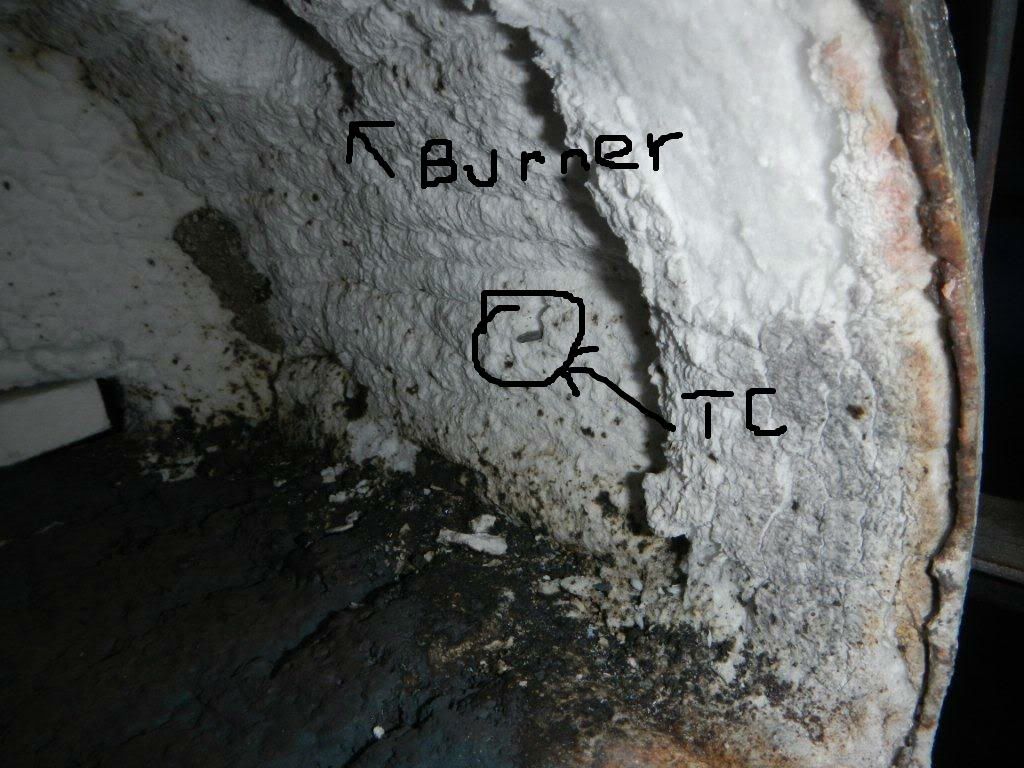
The knife slides in here... When heat treating is underway monitor that the knife and thermocouple are at the same colour. Note all the black stuff? thats steel that has melted to my floor... moral of the story, melting things in your forge is fun but quickly stops it looking real pretty.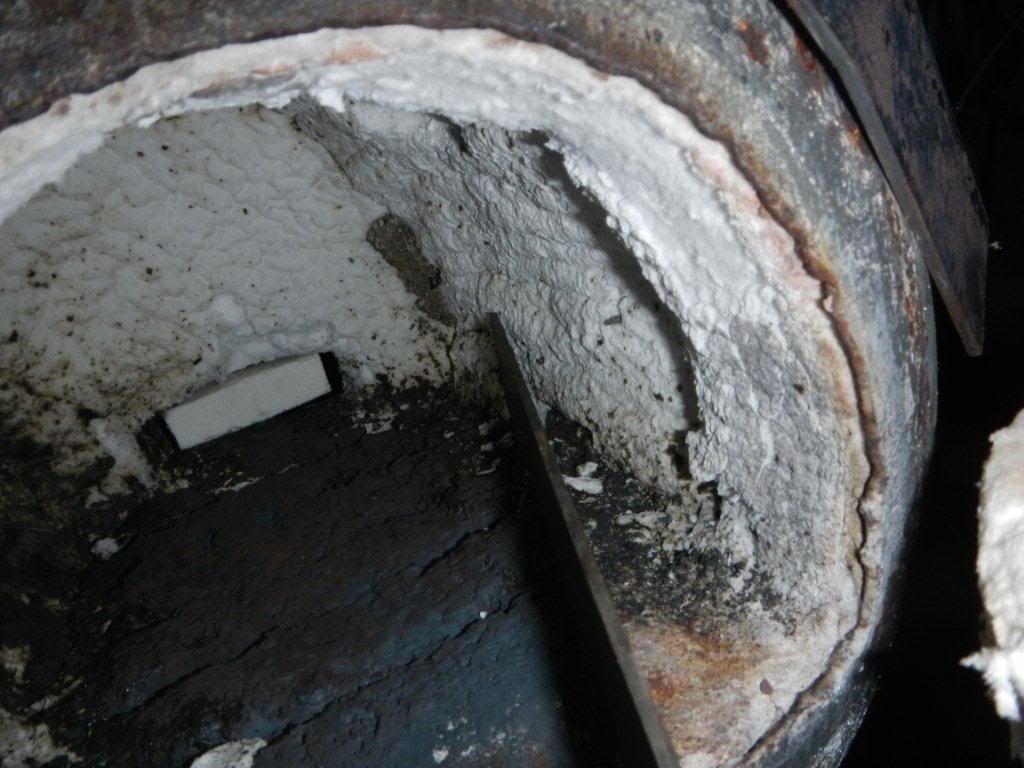
And here is how it looks like with the door in place note the thermocouple coming in the right hand side.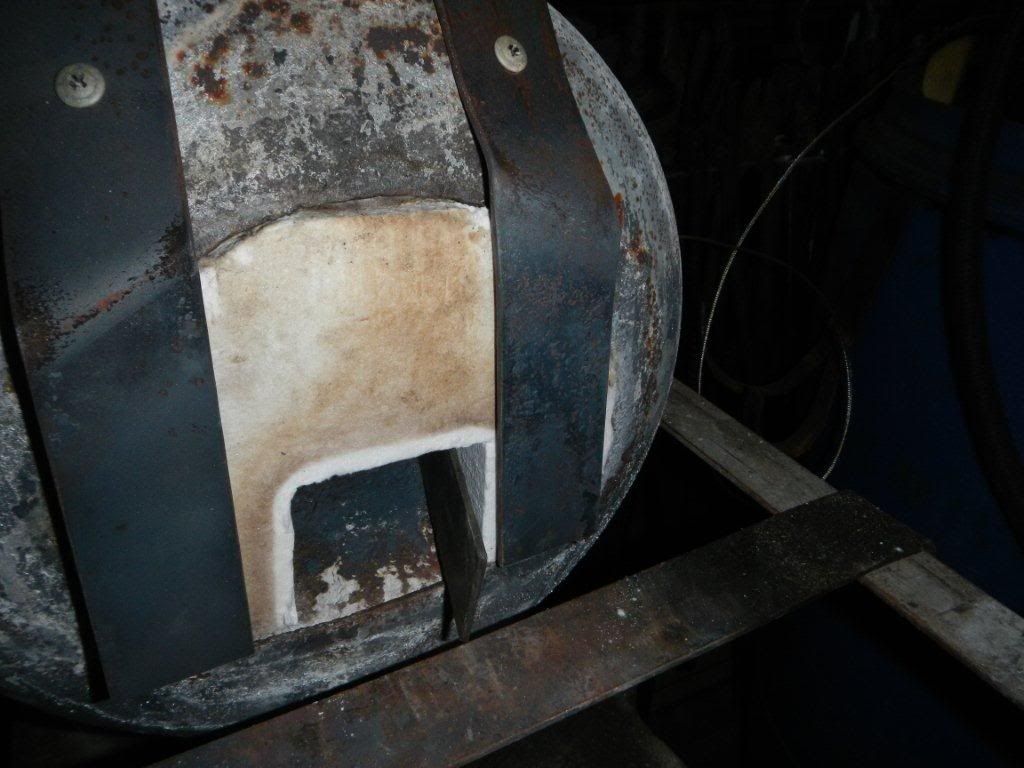
Now there is way more to it than that, but a simple system like this will get you going.... Here is a video that shows the process I use.
Obviously this method produces a lot of carbon monoxide as well as carbon and soot, so a well ventilated space is essential. -
Corin the gas forge building workshop is a great idea, I would be interested in taking part in anything that you propose. I have around 20 different designs but typically none of them have come off. Currently using a two burner NC whispher momma, keen to learn all the in's and out of different models.
Send me some pictures of what you have and what the issues were and maybe we can get some of the rejects working? Anyhow looks like its on.! -
Sorry guys, Its been a while.
I still have Moony's booked firm in the calendar.
I am still happy to run a forge session if
a) If the organizers still want me too,
B) there is enough interest from those attending.
I can make a presentation that is a simple discussion session and demonstration, or a full blown forge building workshop where I supply everything required to build a forge.
If you want the latter option send me an expression of interest via PM and I will see what I can arrange by way of a bulk buy of all materials to keep the costs down.
I bought a new anvil that i can actually lift and will bring my tools this time so looking forward to it. -
Sounds good Phil! Let me know as soon as you have a date.
-
Hopefully he will have it running this year!
-
Here is the thing, as suggested by you guys last year I am happy to put together a bit of a training session on gas forges. I don't want to be seen to be drumming up business and that is not what I am doing. I am simply coming along like everyone else for a good weekend and sharing information.
If there is sufficient interest I can give a talk covering the following topics,
LP Gas, what is it, where does it come from, and what are its physical properties.
LP Gas and Appliance (forge) Safety
Making your own forge, Australian standards and legislative compliance.
An introduction to combustion.
Types of burners and their application. (including demonstration)
Designing your own burner, key principals
Forge Design, materials and insulation, including hazards and safety
Operating a gas forge, tricks and tips for best results
Building your own gas forge.
I could run such a talk over Breakfast on Saturday and it would take 1 - 1.5 hours depending on how much detail you want me to go into. (I could easily stretch it to a half day but there is probably no need for that)
Afterward I would be willing to assist anyone who wants to build their own forge. We should be able to have forges of simple design, and not using too much cast able refractory made on Saturday morning, and firing and tuned on Sunday.
I could and am happy to supply any component to build any forge of your own design, but for simplicity sake It would be easier to make up forge building kits. I can source all gear at wholesale prices and will pass those prices on directly to anyone that wants to take advantage of them. I have no intention of making a profit from this and it is likely to cost me money. This offer is only for those who attend Moony's this year, and gear will be made available there for collection.
I could also make myself available to work on anyone's gas forges, do tune ups and check combustion (I can bring down a carbon monoxide meter and do safety checks also.)
Looking forward to catching up and making a few punches and tongs this year
If people are interested in making a forge please contact me via personal message, and I will supply a component list and individual pricing on the equipment you request, so you can compare my pricing with your own suppliers. I would be happy to discuss forge design at that time also. -
Hey Damien!
Good too see you on here!
You finished that last knife yet? I hammered out a spear point hunter today... -
Yes Mate,
I will bring all the gear.



Get " HAMMERED " at MOONY'S
in Events, Hammer ins, Where to meet
Posted
For those that were there...
As promised, my first shipment of Aussie made tongs will arrive this week... PM me if you want more info.